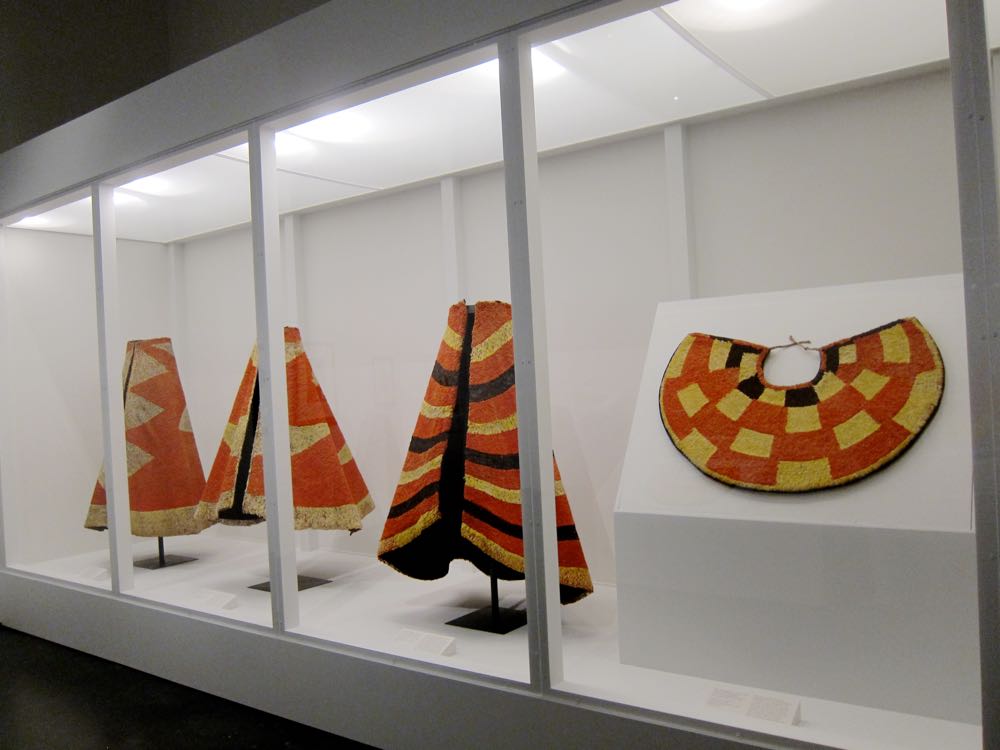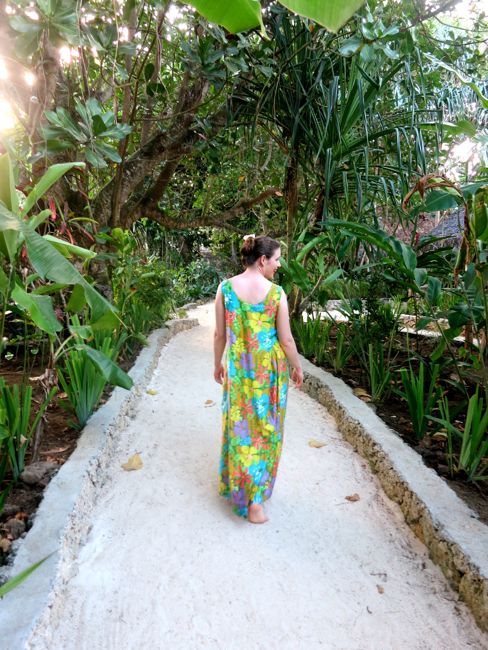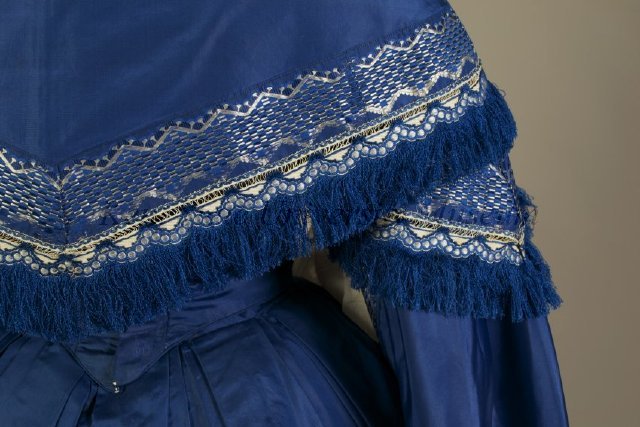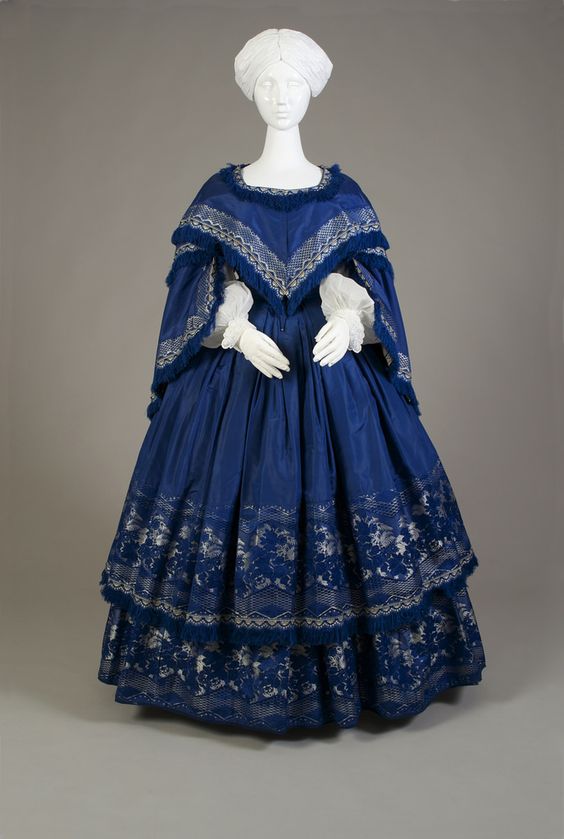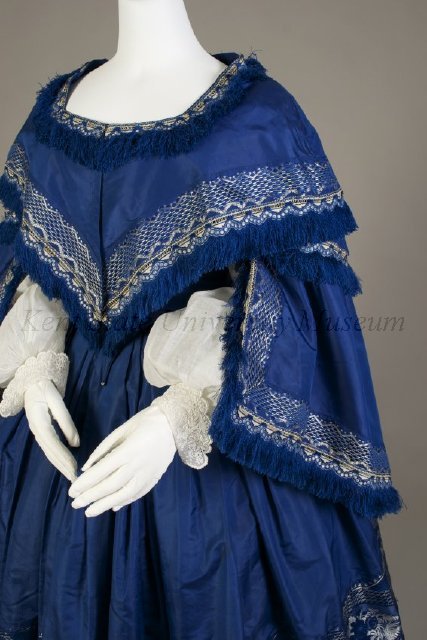I have Edwardian on my mind, because I just finished a late 1910s dress, and photographed it, and am in love with the era in general. So this week’s Rate the Dress is 1910s, and you get to decide if you’re in love with it in particular.
Last week: a crinoline era gown in cobalt blue
Sometimes I’m completely surprised by your reaction to a garment. Last week…not so much! It wasn’t hard to guess that the fabric would be quite popular, or that the extremely long berthe might not. (I also feel slightly vindicated that a couple of half-points were lost for fringe 😉 )
The Total: 8.8 out of 10
A very, very good show, but the machine woven perfection of the fabric could not match the heart of the hand-embroidered frock the week before.
This week: a 1911 theatre dress, part of a bride’s trousseau
This dress was part of the trousseau of Vendla Brown, nee Hallström (1880-1964).
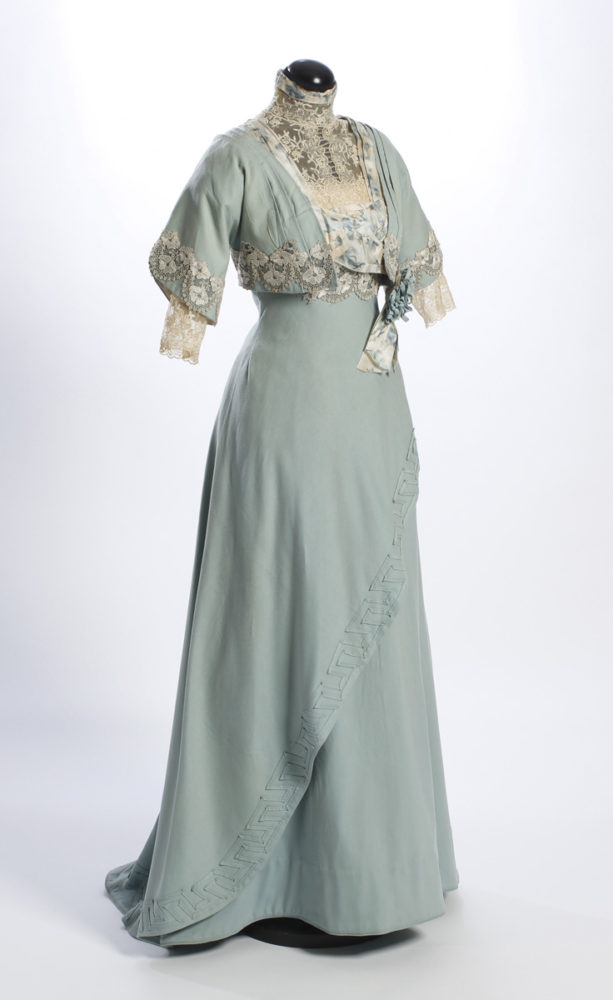
According to the musuem, Velda wore it to the theatre the day after her wedding.
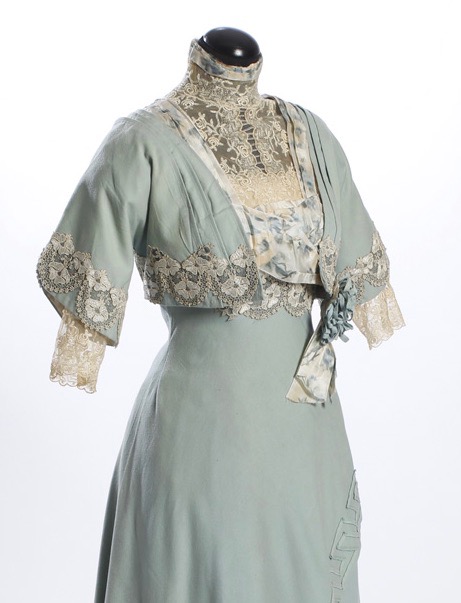
The dress is a lightweight wool, decorated on the skirt with greek key meanders, and on the bodice with two different kinds of lace, and a floral silk ribbon.
The bodice is finished with a bolero effect.
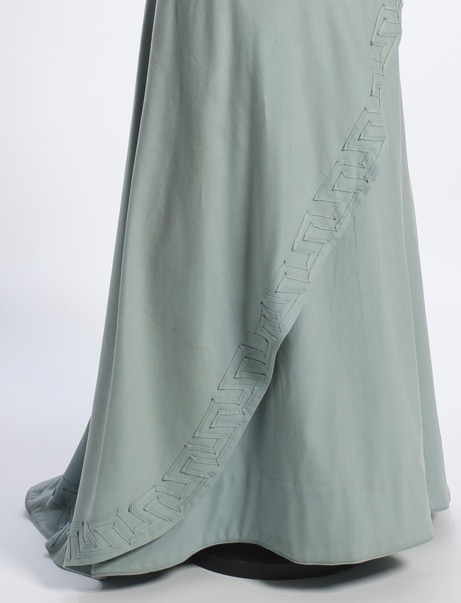
What do you think? An elegant ensemble for a slightly older bride (Velda would have been 33), or too boring, or too many design elements?
Rate the Dress on a Scale of 1 to 10
A reminder about rating — feel free to be critical if you don’t like a thing, but make sure that your comments aren’t actually insulting to those who do like a garment. Our different tastes are what make Rate the Dress so interesting. It’s no fun when a comment implies that anyone who doesn’t agree with it, or who would wear a garment, is totally lacking in taste.
(as usual, nothing more complicated than a .5. I also hugely appreciate it if you only do one rating, and set it on a line at the very end of your comment, so I can find it! And 0 is not on a scale of 1 to 10. Thanks in advance!)


